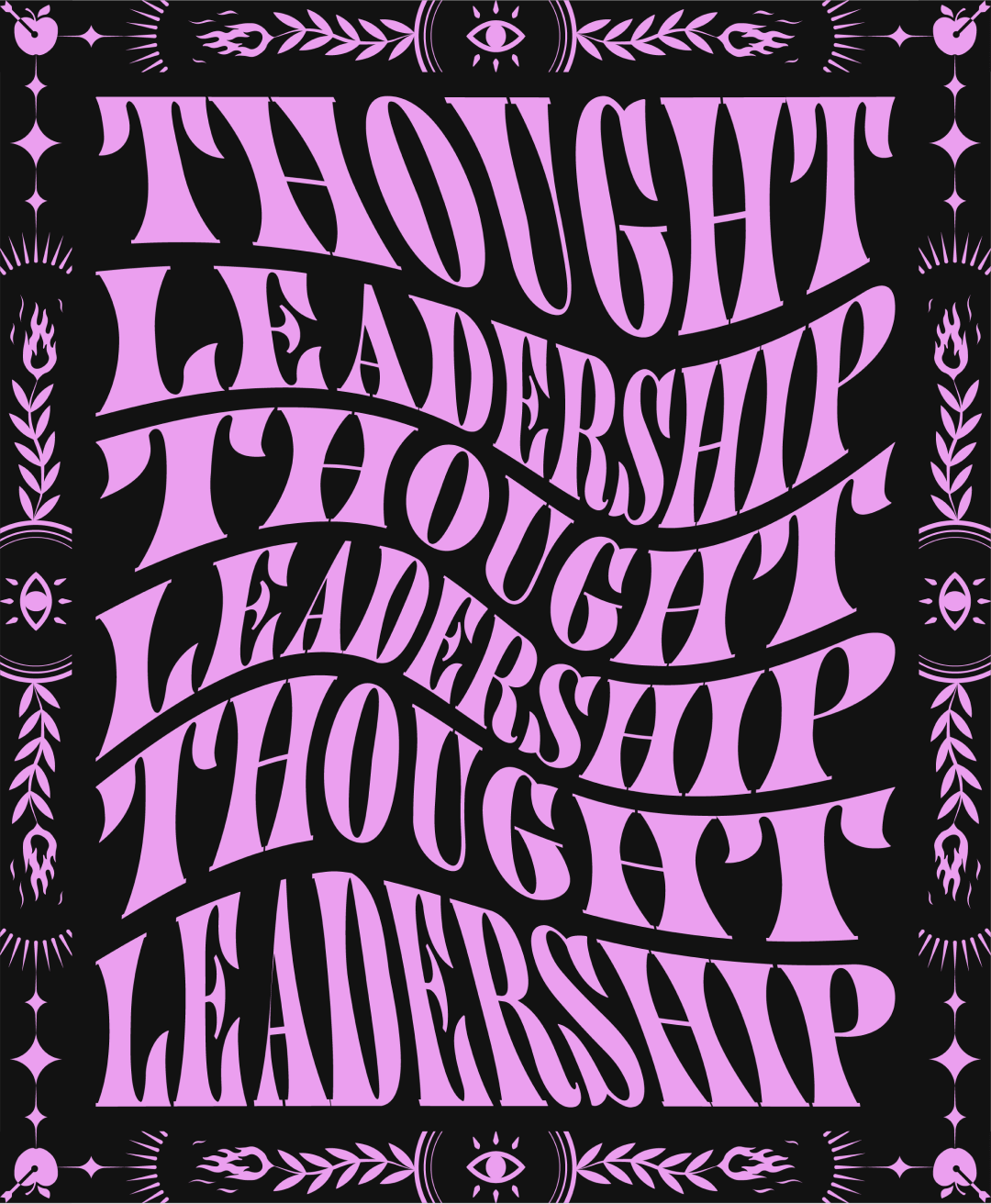And it must be conceived with specific goals in mind—not simply informing or sharing news, but providing context for action, inspiring change, demonstrating your grasp of the future, and humanizing leaders to make a brand’s purpose come to life. These are the crucial elements of building up a magnetic brand that commands high degrees of trust and ultimately delivers business results.
It also helps to take a step back and consider both components of the phrase “thought leadership” and how many organizations are falling flat on both aspects.
In the rush to produce content—and avoid generating any controversy—brands and leaders often default to the type of generic insights that are devoid of any originality or personality. And, on the “leadership” dimension, organizations sometimes forget what it means to be persuasive and instead employ brute force subject matter expertise and lists of facts and figures.
If this sounds like striking a delicate balance, that’s because it is.
Thought leadership, much like obscenity, could be classified under former Supreme Court Justice Potter Stewart’s unhelpful definition of “something [you] know when [you] see it.”
More helpfully, however, at SJR we believe that thought leadership exists on a wider spectrum of content. We work with our clients to achieve the right equilibriums by balancing competing enterprise objectives.




Equilibrium #1:
Balance the Macro and the Micro
The real art of producing great thought leadership is finding the right place between vague observation and overwhelming, in-the-weeds discussion.
C-suite executives, hoping to sound authoritative, issue broad LinkedIn proclamations about “pursuing operational excellence.” Professional-services firms, defaulting to the other extreme, issue reports filled with so many Gantt charts and process diagrams that they are functionally writing in hieroglyphics.
True thought leadership focuses on delivering original but straightforward observations that are a jumping-off point for your readers to think about the world—or their business challenges—differently.

Equilibrium #2:
Give Actionable Advice, Not Naked Insights
Producing thought leadership, however, is a digestive process that requires some upfront work.
It’s not enough to just deliver a Freakonomics-style counterintuitive sound bite or the most pertinent findings from your annual report. Instead, you have to provide the necessary context for your insights and how they might change your readers’ and customers’ day-to-day lives.
It’s one thing to simply report that 70% of digital transformations fail, and entirely another to help your audience understand what bearing that has on the next wave of AI transformation.

Equilibrium #3:
Avoid the Refreshed Sales Material Trap
To drive results for your business, your corporate and executive-driven thought leadership should be intimately tied to key enterprise priorities. Whether that’s increased sales and conversions or establishing yourself as an employer of choice, your thought leadership is your soft-selling way of broadcasting that desired image to key audiences.
At one extreme, you have leaders out there who have built up huge personal brands, but their output seems utterly unspecific to their organization (they could be confused for the CMO of any company).
On the other hand, if you start repackaging sales collateral as LinkedIn articles or hastily placed bylines, audiences will immediately see you as a salesperson and not a trusted source of information and novel thinking.

Equilibrium #4:
Be Authentic, But Stay Professional
Whether as a brand or an executive, you need to connect with your audiences on a personal, human level to break through the crowded marketplace of competing voices and ideas.
Part and parcel of creating that connection is having a distinct identity and tone; real humans don’t develop trust or affinity with dime-a-dozen corporate reports or bromide-dispensing “thought-fluencers.”
However, it bears repeating, this is still a professional endeavor. For serious companies, avoid the easy trap of going Brand Twitter and adapting a vapid, sassy, and pop-culture-inflected tone of voice in favor of sharing more sober, but unique, observations. Individual leaders shouldn’t confuse confessional-style meditations for authentic insights that actually move audiences.
